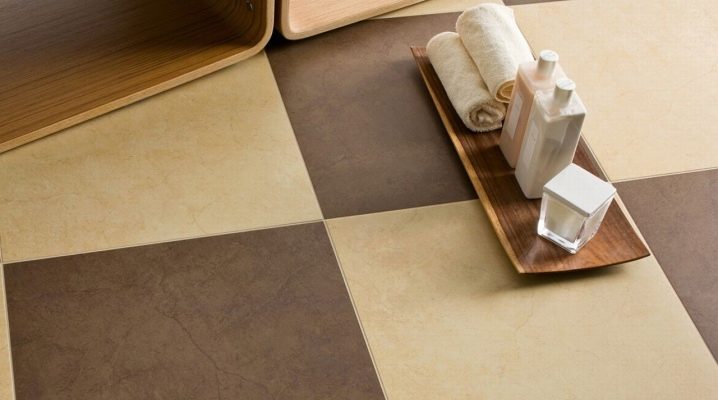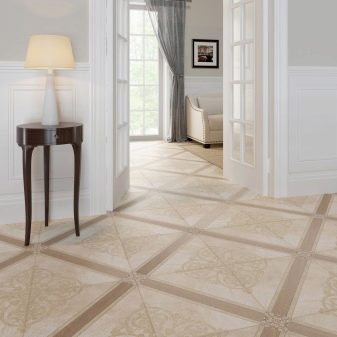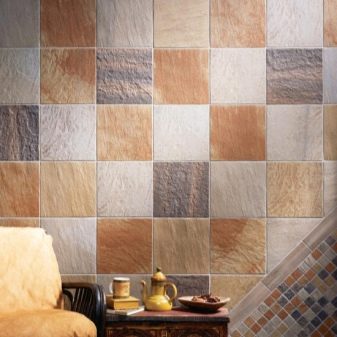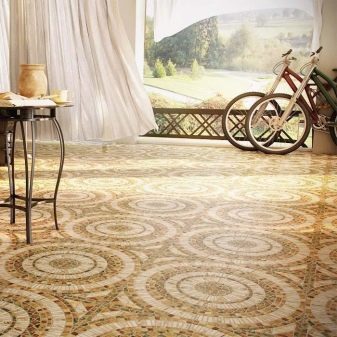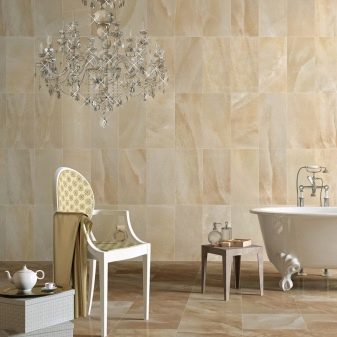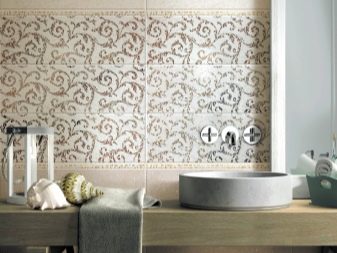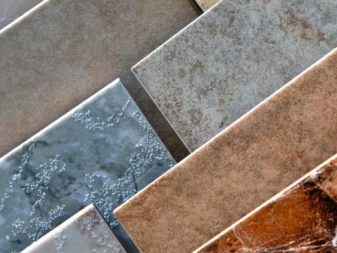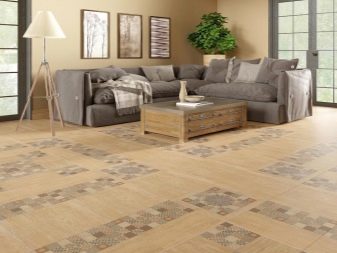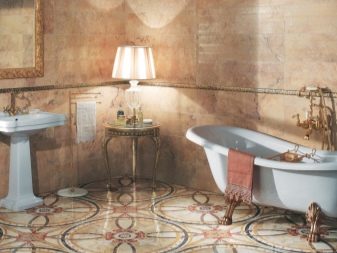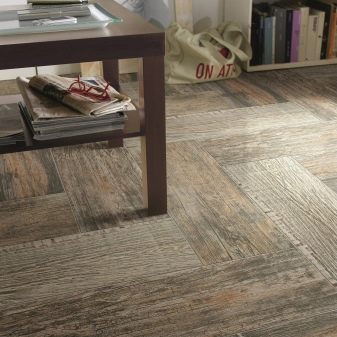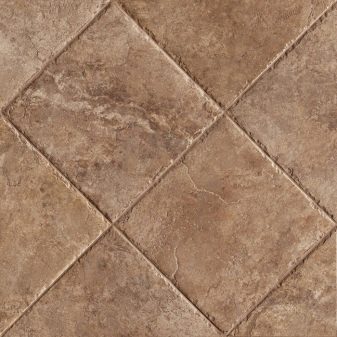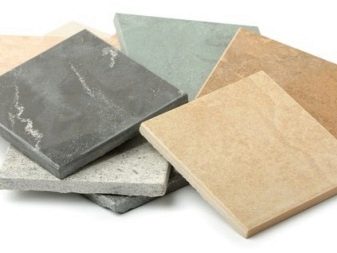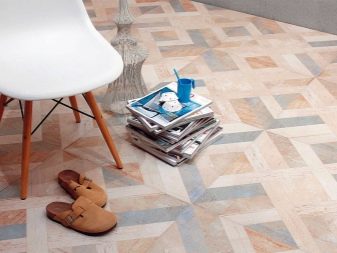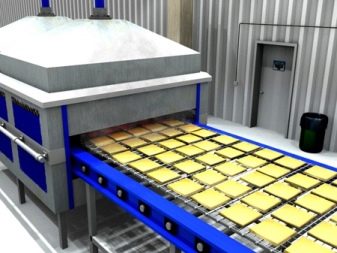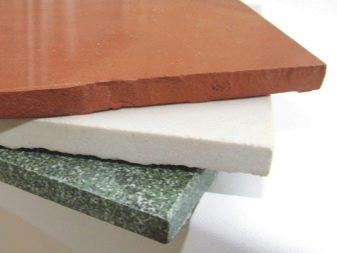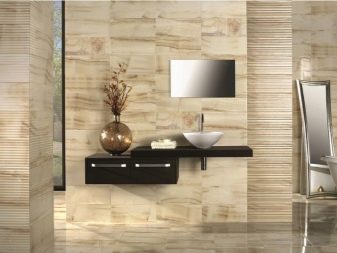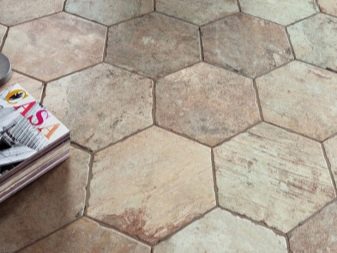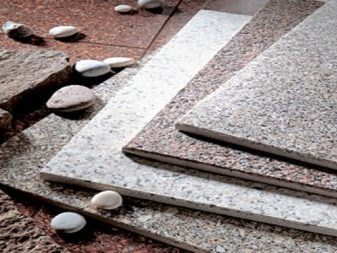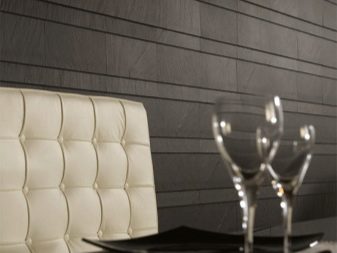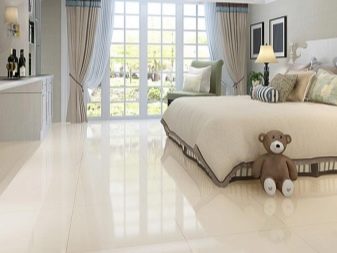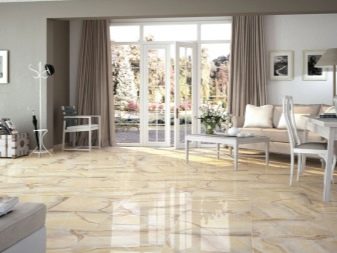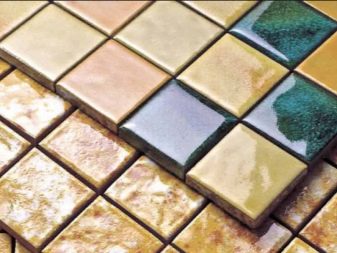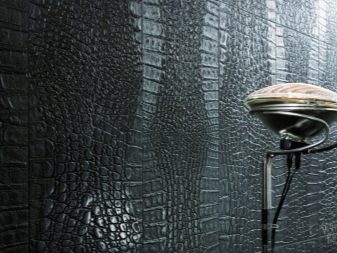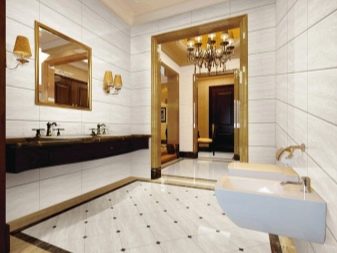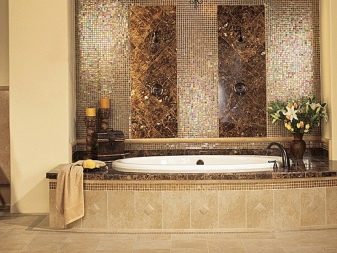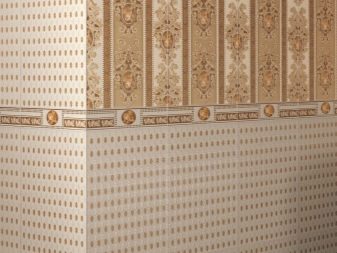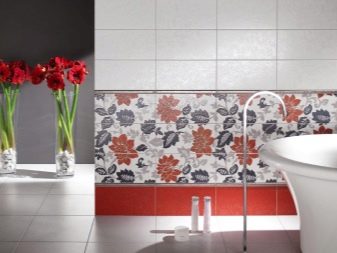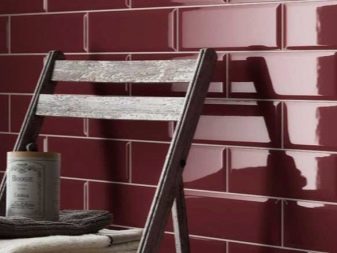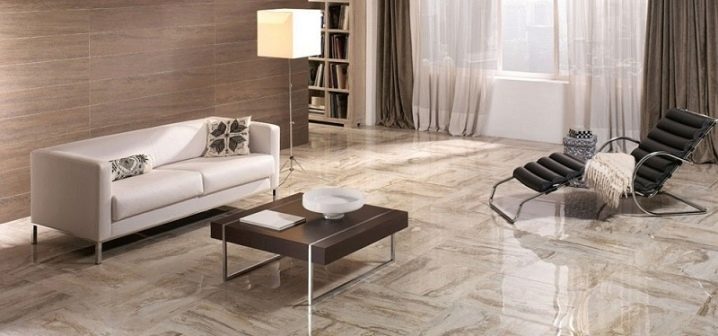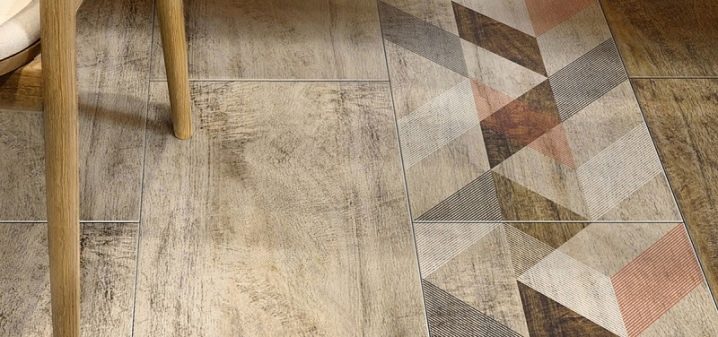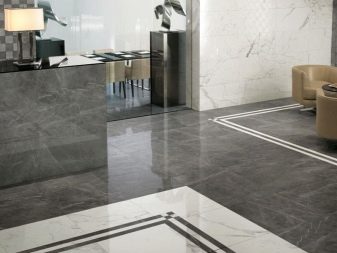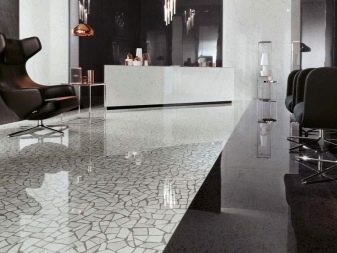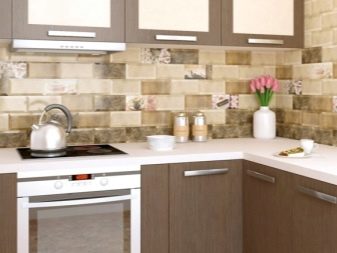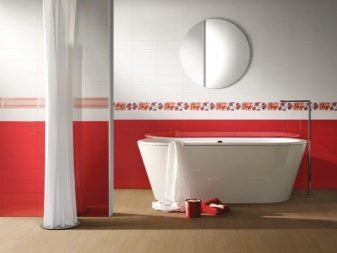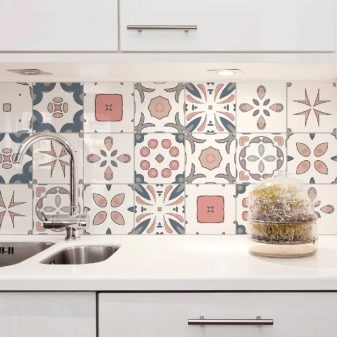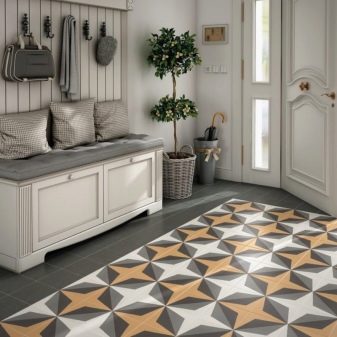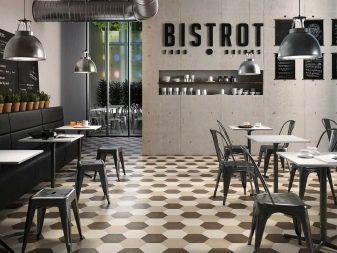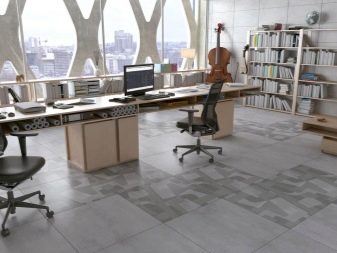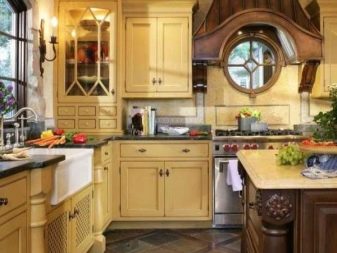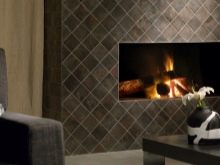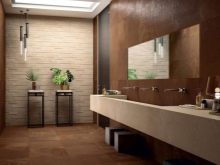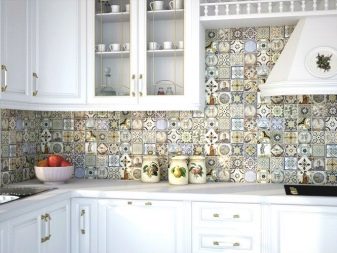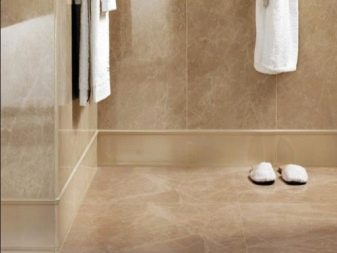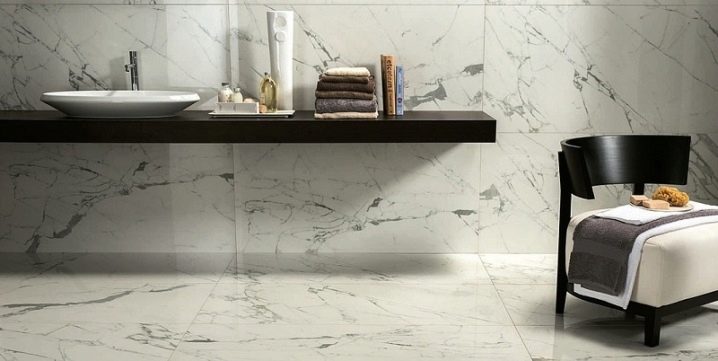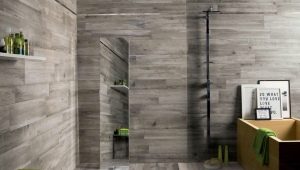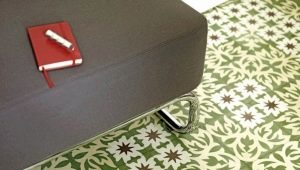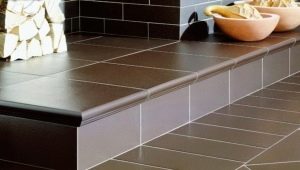Differences of ceramic tiles from porcelain tiles
The range of facing materials is presented in a wide variety of products, so finding the right option to create the perfect interior is not difficult. However, a large variety does not always benefit - it is often difficult to make a choice and purchase really high-quality material.
Few people know that there are big differences between porcelain stoneware and ceramic tiles. And before making the final choice, we suggest that you familiarize yourself with their characteristics and distinctive qualities.
What is the difference?
When choosing a durable and reliable coating for walls or floor, we are faced with a choice - to buy ceramic tiles or porcelain tiles? Today we offer to familiarize with the main differences of these two materials, their advantages and disadvantages.
Properties
Both materials have proven themselves in the market.Ceramic tile has many advantages, thanks to which it has been the sales leader for many years. It is characterized by high durability, low weight, long service life, high moisture resistance, ease of installation and maintenance. Modern manufacturers offer a lot of options for the design of ceramics, and a variety of textures and colors allows you to choose colors based on the design of the room where it is planned to be installed.
The disadvantages of ceramics include extreme fragility, so when transporting and stacking you should be careful. Another significant disadvantage is the weak resistance to ultraviolet - over time, the tile may fade or change color.
The main difference between porcelain tiles and tiles is the ability to withstand enormous loads without deforming the top coating. Moreover, there are practically no scratches on it.
It is worth noting that the porcelain stoneware greatly surpasses a more decorative ceramic coating in its strength properties. Due to the weak porosity of the surface, it repels moisture, thereby preventing it from passing inside the coating.Due to this, the risk of mold under the porcelain stoneware is minimal.
This material is characterized by high heat-resistant properties. It is resistant to fire, frost and high temperatures. Its wear resistance also deserves attention - even a few years after laying the coating will be in its original form.
Porcelain tile is easy to clean and is not “afraid” of abrasive, alkaline and acidic detergents and cleaning products. Does not fade under the influence of sunlight, does not deform in bad weather conditions.
Composition
Ceramic tile is a thin rectangular or square plates. The main component for its manufacture is the sintered charge mass, although up to 20 different components can be included in the composition. Most often, ceramic products consist of the following elements:
- clay of different varieties and types, but the highest quality products are obtained from white clay;
- quartz sand;
- chamotte - shredded waste and defective products that have not passed quality control during the production process;
- feldspar or pegmatites used to create floor tiles, they give the finished product hardness and reliability;
- pigments.
Depending on the quantity and quality of the components (for example, the stability of the chemical composition, mineralogical purity, the degree of particle refinement), the technical characteristics of the products and, accordingly, the class of the finished product are determined.
At a certain stage of production, products are fired using a special technology. This makes the product more durable and reduces the percentage of water absorption of the material. In addition, it has a positive effect on the resistance to chemical compositions, as well as temperature extremes. Plus, thanks to single firing, the thickness of the topcoat increases.
The composition of porcelain stoneware and the process of its manufacture is partially similar to the production technology of classic floor ceramics. Even the materials used are the same, the difference is only in the proportions used. In the production of used:
- white grades of clay;
- kaolin;
- quartz sand;
- feldspar.
The ceramic granite gets its unique strength properties during baking. To do this, the temperature in the furnace is raised to 1300 degrees, and during firing, the components practically solder with each other.High pressure (about 450 kg per 1 cm) reduces the porosity of the material and increases resistance to moisture and low temperatures.
After firing, the surface of the porcelain stoneware turns out to be slightly rough, and it becomes mirror-like after polishing. Although it is precisely mirror models of porcelain that tend to wear out quickly, because the structure of the material is disturbed by abrasive processing.
Appearance
Ceramic tiles are highly valued precisely as a decorative material. There are many collections of ceramics on the market, but there are certain fashion trends that occasionally pass and more interesting and original models come in their place.
There are several types of tiles:
- matte;
- polished;
- glossy;
- glazed.
Now very popular glossy tiles with imitation of leather, textiles, metal. Very popular models of wood. Over the years, ethnic style and antique design has not gone out of fashion. This finish will look good in the bathroom and in the kitchen.
Polished tiles are more suitable for wall cladding, as it becomes very slippery when wet, and laying such products on the floor is fraught with injuries.At the same time, the gloss of the coating of such a tile cannot be compared with any other type of analog products.
Often, the coating of classic ceramic tiles is complemented by a spectacular mosaic. If repairs have a limited budget, then mosaic boxes will be a great alternative. With their help, you can freshen up the interior and at the same time save on finishing materials. Especially beautiful mosaic will look in the bathroom - its brilliance and shine will give this small room brightness and originality.
One of the modern trends in the design of ceramics is the imitation of textiles, which usually goes together with a printed floral pattern. This tile is the best for the kitchen in the country style.
Floral ornament - has long been not uncommon in the design of tiles. All sorts of patterns in the form of flowers, leaves, twigs on a matte tile can dip you into the world of aesthetics and comfort. In addition, today you can choose a tile for a specific interior design. In order not to make a bad choice, you can give preference to ceramics with a classic design. Classics never go out of fashion, and well-chosen pattern of products will emphasize the dignity of the room and hide its drawbacks.
With the help of glazed tiles, you can radically change any room, turning the bathroom into a spa, and the kitchen into a stylish and pleasant place to cook.
Ceramic granite tiles are larger than standard ceramic products. As a rule, it is used for finishing floors outside and inside buildings. It is worth noting that porcelain stoneware is simpler in styling, and models with a straight edge can give a monolithic effect to the surface.
Porcelain tiles can be:
- glossy;
- matte;
- glazed.
Glazed porcelain is especially popular, as it has a delightful appearance. Its color palette is almost unlimited - there are single-colored and multi-colored products. Not so long ago, manufacturers managed to achieve imitation of paving stones, mosaics, and pebbles. Glazed material can have the texture of wood, stone, brick, slate, which opens up the possibility of creating a unique interior design.
The most popular porcelain stoneware is satinated, as it wears out quickly and is an order of magnitude more expensive than analog products.He is not able to withstand such heavy loads, but his appearance completely covers this shortcoming. Often satin models are used for cladding walls and facades of buildings.
Polished porcelain looks just amazing. Firstly, it glitters and perfectly imitates the texture of marble or natural stone, and secondly, it has an incredible depth of color.
Scope of application
Ceramic tile is suitable for facing the floor and walls in the kitchen, hallway, bathroom. For the kitchen is better to choose products "marbled" or stone. Most designers prefer a combined coating, combining tile with various decorative elements made of wood, glass, metal. Using products of different sizes allows you to achieve a delightful visual effect.
For the bathroom it is better to choose ceramics with a high level of resistance to chemical compositions. It is good, if the structure of the tile will have weak porosity and high acidity - this will allow to increase the resistance to moisture.
Selecting ceramics, you should familiarize yourself with the symbols indicated on the packaging - a suitable tile for residential premises with a high level of humidity should be marked with AA.
For decoration of kitchen walls, tiles with low strength will be suitable, but at the same time it should be resistant to acids and alkali. It is best to choose products with a smooth surface - they are easier to maintain.
Tile for facing corridor and hallway should be durable, so it is best to give preference to unglazed durable ceramics. When choosing, it is worth considering parameters such as hardness, durability and ease of maintenance. Modern manufacturers produce ceramics collections for hallways, with a “chrome” structure, brilliance and high durability.
Often, ceramic tiles are used for cladding the walls and floors of cafes, restaurants, shopping centers, hotels, the lobby of theaters and concert halls. Glazed products with enhanced strength properties are commonly used. Often in such places you can find designer ceramics or products from limited editions.
More and more rarely, ceramics are used for cladding of industrial enterprises, since its properties are somewhat inferior to porcelain stoneware and there is a probability of fast cracking. However, if desired, ceramics can still be used for cladding internal and external walls. In this case, choose a solid and dense tiles.For facing the floor choose products with anti-slip surface.
The scope of application of ceramic tiles is not limited to the walls of residential and industrial buildings. Often it is used for arranging railway stations and airports, parks, metro stations, verandas, pedestrian crossings. Usually in such places you can find enameled, unglazed and extruded ceramic products.
Due to the fact that porcelain tile is more durable material, it is used in those places where not only decorative qualities are important, but also the reliability of the coating. It will be simply indispensable in the home interior: in the kitchen, bathroom or hallway. With it, you can create a truly practical design of any room.
If we talk about the design of the exterior walls of buildings, then there is no more suitable material than porcelain stoneware. Due to its properties, you can not worry about the state of the facade, even in conditions of high frost.
The special structure of porcelain stoneware allows it to be used even for lining fireplaces and stoves. Of course, decorative ceramics are also suitable for such purposes, but porcelain stoneware wear will be much less.
Often, porcelain stoneware serves as a practical material for decorating floors and walls in residential buildings with high traffic. That is why it is often used to design a kitchen apron, bathroom, porch.
What is better to choose?
As you can see, the differences between ceramic and ceramic tiles are very significant. However, it is difficult to say which one is better. When selecting a material, you need to consider a number of factors:
- type of room;
- surface load;
- climatic conditions;
- possibility of damage.
Speaking objectively, in the bathroom and kitchen it is better to put ceramic tiles, since the load on the surface will be moderate. In the hallway and on the porch are usually put porcelain. Steps are veneered with special products with rubber linings that prevent slipping.
It is worth noting that porcelain tile will cost much more than ceramics, so if there is no need, it is better to purchase ordinary tiles.
In any case, you can choose a model with improved performance properties, but in this case you should be prepared for serious expenses, since the price of such products will be slightly smaller than porcelain stoneware.
About the difference between ceramic and porcelain tiles, see the following video.
